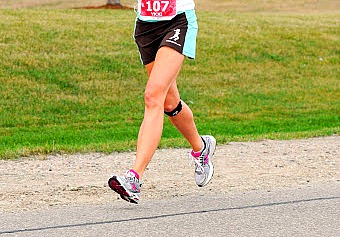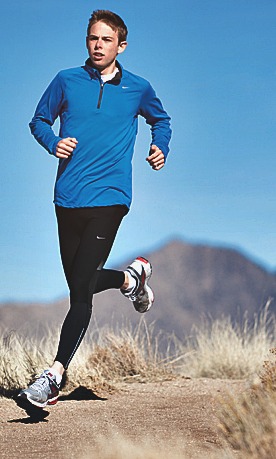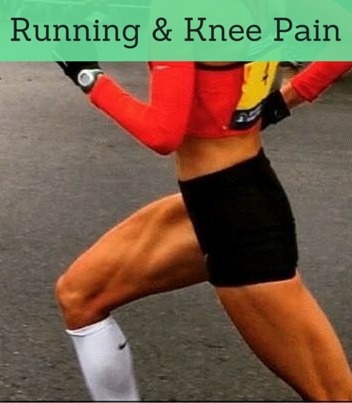Knee running injuries are becoming way too common these days. Research shows that a strikingly large percentage of knee impact injuries are in heel strike runners, particularly those who jog too slow.
Knee Running Injuries Linked to Jogging Too Slow
Peterson et al. found that heel strike runners who ran slowly had greater knee pain compared to heel strike runners who ran fast.
- The researchers found that running at slow speeds while landing on the heel increases cumulative loading on the knee joint as compared to heel strike running at faster speeds.

You would assume running at a slower pace with a heel strike would reduce overall impact, but this was not the case in the current study.
- At slow running speed’s, the heel striker’s increased their cadence which in turn, may increase the cumulative load at the knee-joint.
But increasing cadence is a good thing in running, right?
Recent reports have found that increasing cadence reduces knee pain, however this pertains to forefoot running, not heel strike running. Higher cadence is advantageous only if a forefoot strike is utilized.
- In forefoot running, higher cadence was found to decrease step length and reduce joint energy absorption (negative work) during the first half of running gait.
- Higher cadence in forefoot running also reduces the distance between the center of mass and the heel during initial ground contact.
As for heel strike runners, it is not possible to reduce loading on the knee by increasing cadence because heel striking is associated with more impact-related variables that result in higher peak pressures and loading rates compared to forefoot running.
The Take Home Message
For decades, experts urged caution, especially for inexperienced runners, to run slow because of the ‘high impact’ nature of running. At slower running speeds, it was assumed that the body had the
capacity to absorb impact. But not if you run on your heels.
To prevent knee pain from running, you need to run much faster and with a forefoot strike. On average, forefoot runners show a 47% lower average loading rate compared to heel strike runners. And more hints of the protective effects of forefoot running on the knee come from observations elite distance runners who mostly utilize a forefoot strike.

More to Explore:
The Benefits of Forefoot Running
Why Heel Strike is Bad when Running
Heel Strike Running Impairs Elasticity Effectiveness
Best Shoes for Forefoot Strike
References:
Heiderscheit et al. EFfects of step rate manipulation on mechanics during running. Med Sci Sports Exer, 2011; 43(2):296-302
Kulmala et al. Forefoot strikers exhibit lower running-induced knee loading than rearfoot w strikers. Med Sci Sports Exer, 2013; 45(12):2306-2313.
Peterson J, Sorensen H and Nielsen, RO. The cumulative loads increase in the knee-joint at slow speed running compared with Faster running: a biomechanical study. J Ortho Sports Phys Ther, 2015;1:1-22.
Bretta Riches
BSc Neurobiology; MSc Biomechanics candidate, ultra minimalist runner & founder of RunForefoot. I was a heel striker, always injured. I was inspired by the great Tirunesh Dibaba to try forefoot running. Now, I'm injury free. This is why I launched Run Forefoot, to advocate the health & performance benefits of forefoot running and to raise awareness on the dangers of heel striking, because the world needs to know.
Latest posts by Bretta Riches (see all)
- Can You Run In Barefoot Shoes? Yes, But DON’T Heel Strike! - 21/07/2024
- Why Cushioned Running Shoes Are Really Bad for Your Feet - 19/07/2024
- Do Cushioned Running Shoes Cause Injuries? - 17/07/2024


Leave a Reply